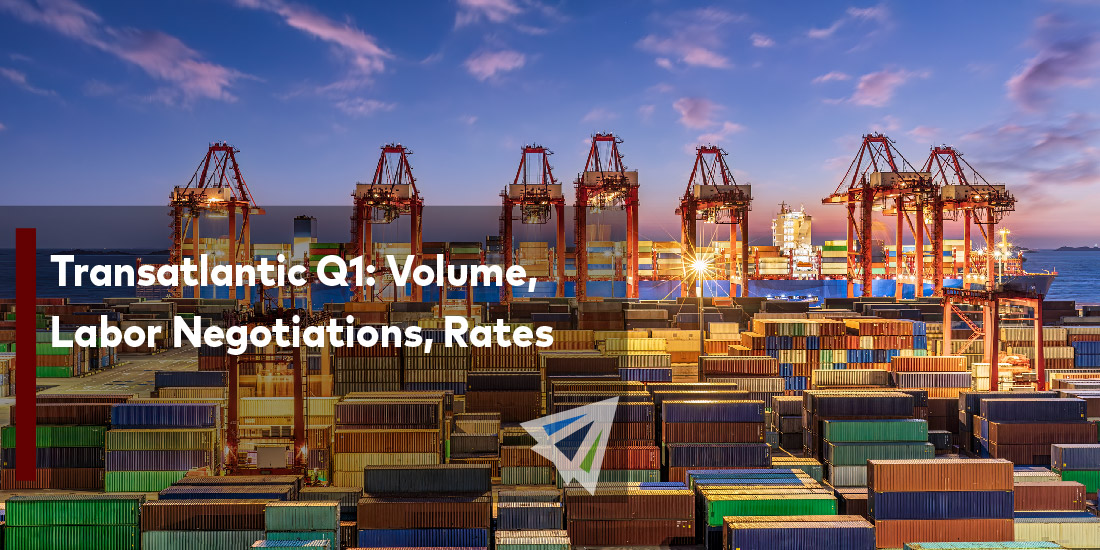Within the dynamic domain of international trade, there has been a notable resurgence of the trans-Atlantic route. The first quarter of this year saw an outstanding 10% increase in demand for European exports to the US, which was a significant milestone as it returned the volume of trans-Atlantic westbound shipments to pre-pandemic levels. This rebound not only demonstrates the trade route’s tenacity but also the health of the recovering economy.
A Look at the Numbers
The data speaks for itself: over the first three months of the year, 928,232 TEUs were imported into the US, almost exactly matching the numbers from the first quarter of 2019. Merely 5% separated this outstanding accomplishment from the unprecedented numbers recorded in the first quarter of 2021. After a 5.9% fall in January, the traffic on westbound routes has recovered quite quickly, which is especially impressive. On the other hand, February saw a strong 20.13% growth in volume, and March saw a notable 17.3% gain over the prior year.
Senior vice president for maritime freight/Europe at DHL Global Forwarding Markus Panhauser observed that carriers are now selectively choosing cargo rather than scurrying to fill orders due to the high demand. The transatlantic westbound vessel utilization rate has been close to 75% as a result of this selectivity. In spite of this, westbound rates have increased slightly but have stayed mostly stable; this pattern is anticipated to continue as demand rises.
Interest Rates and Contracts
Long-term contract rates have not altered much, despite the spot market seeing significant price rises. At the end of December, prices were just $600 per FEU; in subsequent weeks, they have more than doubled to over $2,000 per FEU. This apparent discrepancy points to some stability in the midst of apparent turmoil. Carrier optimism over the sustainability of recent rate hikes is still cautious, while some have expressed relief at the increasing trend in market rates.
As interest rates steadily rise, focus is now shifting to other elements affecting the nature of transatlantic trade. Concerns about possible interruptions are growing as longshore labor contract discussions on the US East and Gulf coastlines are being keenly watched. There is an additional degree of uncertainty due to the contract between the International Longshoremen’s Association and the US Maritime Alliance expiring soon. Industry analysts have cautioned that if a deal is not struck, there might be significant disruptions at US East Coast ports.
In Summary
It is clear from these changes that the transatlantic trade route is going through a period of change and adaptation. Demand and rates are improving, but obstacles like labor disputes are just around the corner, emphasizing the industry’s need for adaptability and resiliency. The tenacity shown thus far by stakeholders in navigating these issues is evidence of the transatlantic trade connections’ continued vitality.
Should you have any questions regarding this, please reach out to our team today. We solve issues through mutual expectations, effective communication, and visibility tailored to your needs.
Additionally, we have our weekly market updates that can provide you with relevant freight news, updates, developments across the industry, and more.
